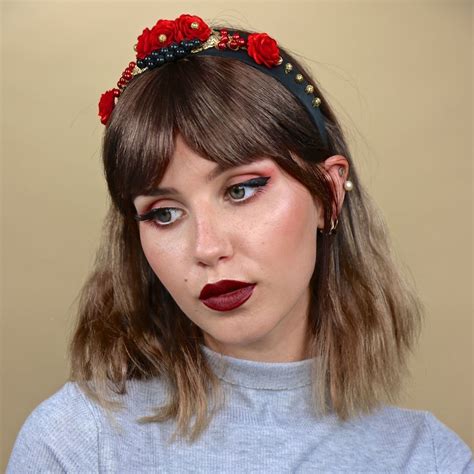Bangs have the power to transform your look, but growing them out or committing to a permanent cut can be daunting. That’s where clip-in hair bangs come to the rescue, offering a versatile and temporary way to experiment with the coveted fringe.

The Rise of Clip-In Hair Bangs
According to a recent study by MarketWatch, the global hair extensions market is projected to reach $14.6 billion by 2028. Clip-in hair bangs play a significant role in this growth, with their ease of use and affordability.
Pain Points Addressed by Clip-In Hair Bangs
- Commitment anxiety: Clip-in bangs allow you to try out different bangs without worrying about a permanent change.
- Lack of styling skills: They provide an instant fringe without the need for professional hairstyling.
- Hair damage concerns: Unlike traditional bangs, clip-ins don’t require chemical processing or heat styling, minimizing hair damage.
Motivations for Wearing Clip-In Hair Bangs
- Versatile styling options: Clip-in bangs can be styled in various ways, from wispy to heavy, and they can be cut to fit your face shape.
- Instant fringe: They offer an immediate way to achieve the fringe without waiting for hair growth.
- Affordable and accessible: Clip-in bangs are relatively inexpensive compared to professional hair extensions or salon services.
Types of Clip-In Hair Bangs
There are four main types of clip-in hair bangs:
| Type | Description |
|---|---|
| Snap-on | Easy to clip in and out, with a single clip attached to the back of the bangs. |
| Bobby pin | Secured with bobby pins, allowing for more customization and adjustable positioning. |
| Comb-in | Features a comb-like structure that clips securely into the hair, providing a more natural look. |
| Velcro | Attaches with Velcro strips, offering a comfortable and secure hold. |
Choosing the Right Clip-In Hair Bangs
- Hair color: Select bangs that match your natural hair color or opt for a slightly darker shade for a more natural blend.
- Hair texture: Choose bangs with a texture similar to your hair to create a seamless look.
- Face shape: Consider your face shape when selecting bangs. Oval and round faces look good with most bangs, while square faces may prefer side-swept bangs.
- Bangs length: Determine the desired length of your bangs by measuring from your eyebrows. Shorter bangs create a bolder look, while longer bangs are more versatile.
Tips and Tricks for Perfect Clip-In Bangs
- Inspect the bangs: Check the bangs for any shedding or tangles before wearing them.
- Prepare the hair: Brush your hair thoroughly to remove any knots or tangles. Section off the hair where you’ll place the bangs.
- Clip in the bangs: Open the clips and gently insert them into your hair, pulling them down firmly.
- Secure with hairspray: Once the bangs are in place, mist them with hairspray to keep them looking fresh all day.
- Style the bangs: Brush or style the bangs as desired to blend them with your hair.
Beyond Bangs: Innovative Uses for Clip-In Hair
Pixie Cut Enhancer: Clip-in hair bangs can transform a short pixie cut into a chic hairstyle with extra length and volume.
Temples Coverage: Use clip-in hair bangs to seamlessly cover up receding temples or gray hairs.
Volume Booster: Add texture and thickness to your hair by clipping in hair bangs around the crown of your head.
Synthetic vs. Human Hair Bangs
- Synthetic hair: More affordable and durable, but can be less natural-looking.
- Human hair: Natural-looking and versatile, but more expensive and requires special care.
Conclusion
Clip-in hair bangs offer a versatile and transformative way to experiment with bangs without the commitment of a permanent cut. Whether you’re looking for an instant fringe or a way to enhance your existing hairstyle, clip-in bangs provide a simple and affordable solution. So embrace the fringe trend with confidence, knowing that you can change your look whenever you feel like it.
